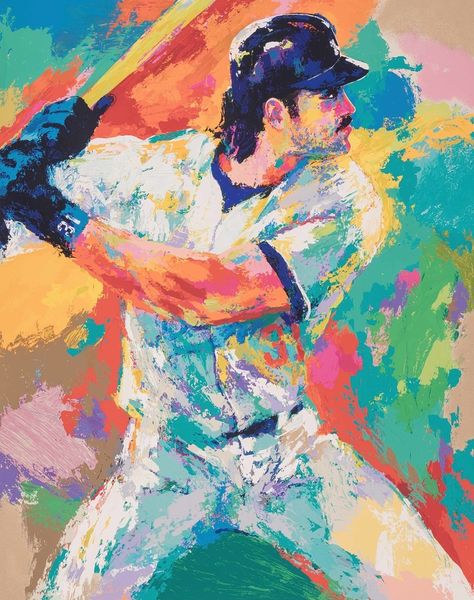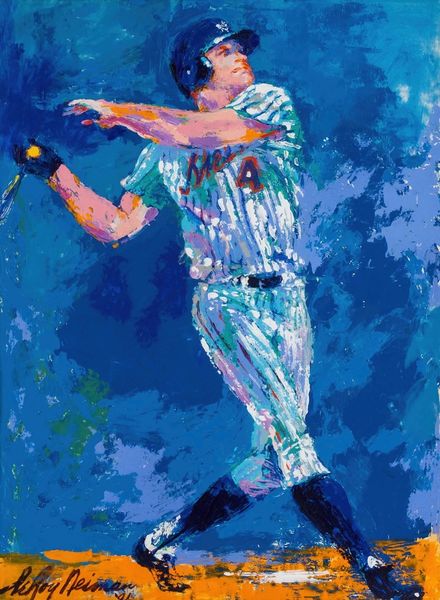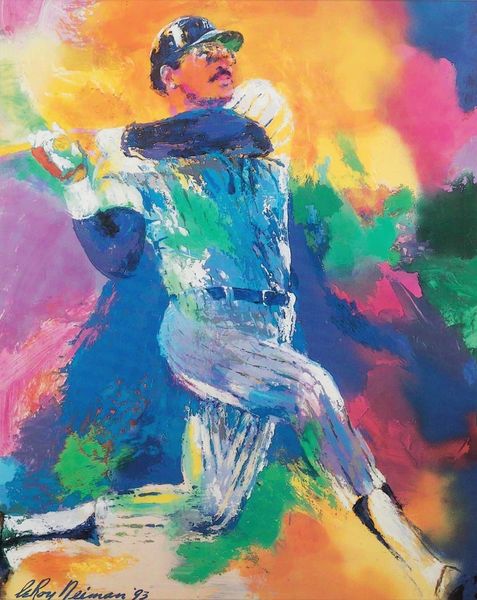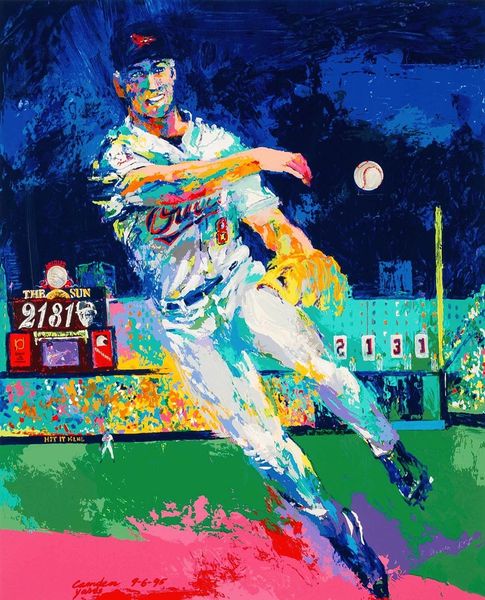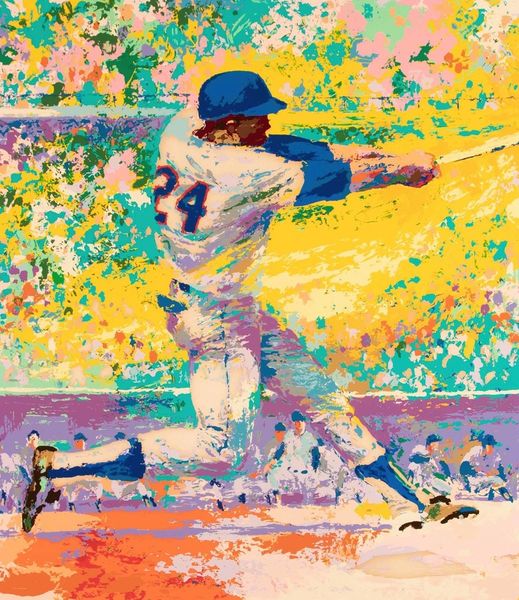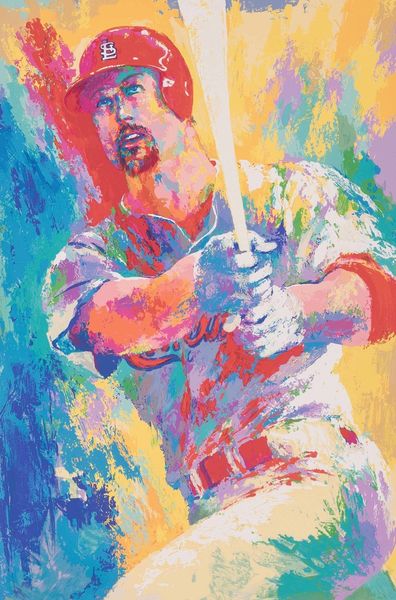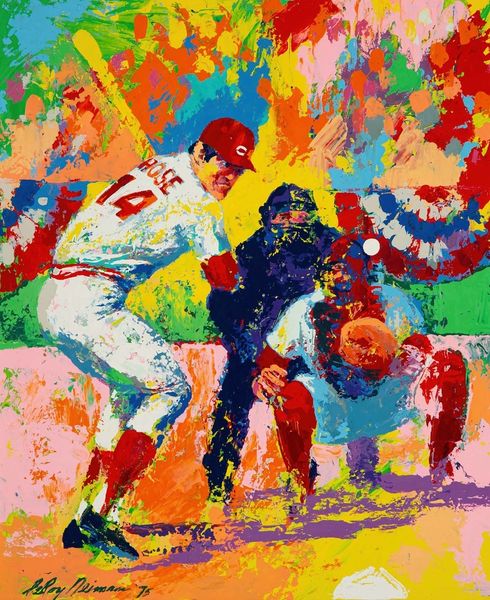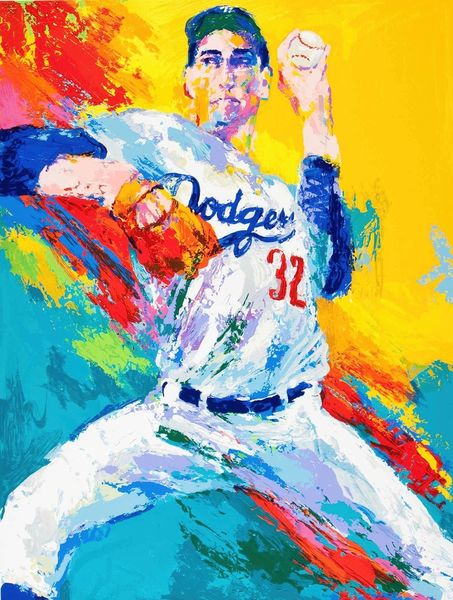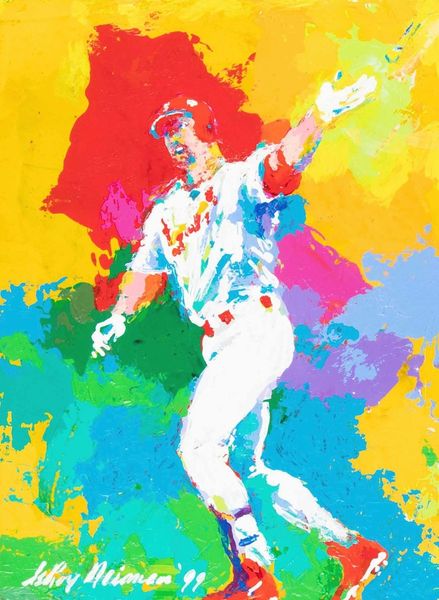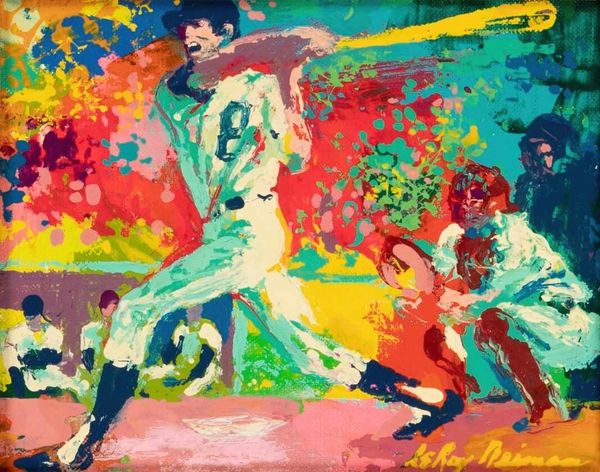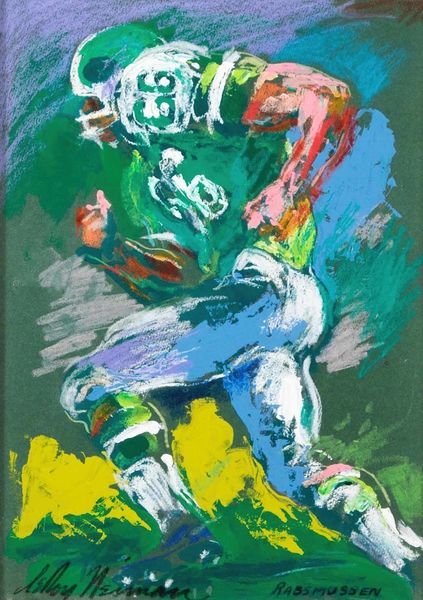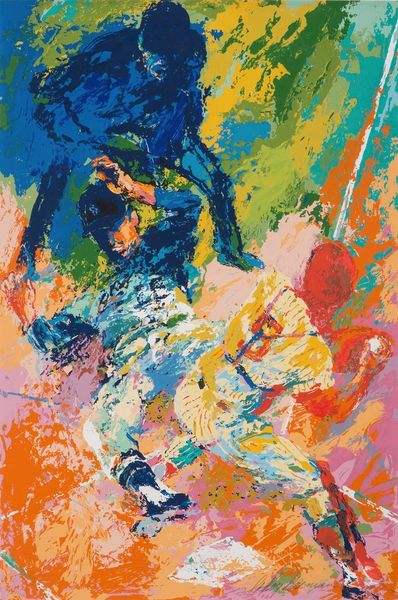
Copyright: Modern Artists: Artvee
Curator: Here we have LeRoy Neiman's "Babe Ruth," created in 1973. He uses acrylic on canvas to capture the dynamism of the legendary baseball player. Editor: Immediately, I am struck by the sheer kinetic energy. The composition feels explosive, as though Ruth himself is a force of nature contained—barely—within the canvas. Curator: Absolutely. Neiman was renowned for his ability to capture the energy and movement of sporting events, but consider also how Ruth, a working-class icon, achieved unparalleled fame in an era of immense social change. The brashness of his image aligns with that changing socio-political landscape. Editor: The color palette also contributes to that energy. The high chroma blues, greens, and even the touch of pink in the lower regions are bold and unrestrained. The almost violent application of paint creates texture, and in turn, suggests motion. Curator: Indeed. Consider also the context of Pop Art and its relationship with celebrity culture and consumerism. Neiman’s portrayal elevates Ruth to the status of a modern-day icon. We are reminded that sporting figures are now brands, accessible and marketed on a global scale, just like any other consumer product. Editor: Yet the execution has a raw, almost expressionistic feel. This keeps it from feeling too commercial, somehow. The artist does seem to have an interest in distilling the essence of motion through these spontaneous gestural markings, while still being anchored in something representational. Curator: And there's something distinctly masculine in the artwork; Babe Ruth stood for ideals of American strength, success, and yes, hyper-masculinity. How might Neiman both celebrate and interrogate such entrenched societal narratives? Editor: I'm less inclined to engage the sociological readings, and far more attracted to its pure optical energy—a potent expressionistic dynamism distilled into fields of vivid color. The painting becomes, therefore, an example of visual art striving for movement. Curator: So, perhaps we both agree that Neiman succeeded in capturing the enduring energy and iconoclasm that define Babe Ruth's lasting legacy? Editor: A point well made. I was convinced from the very beginning.
Comments
No comments
Be the first to comment and join the conversation on the ultimate creative platform.
